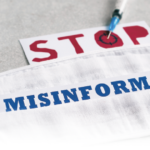TR: What are your thoughts on telemedicine?
Dr. Schiopu: Telemedicine is a necessary evil. Early on, telemedicine was the only way to stay in touch with patients without unnecessary exposures.
Personally, I am currently 100% face to face now. As a rheumatologist, we need to feel joints and listen to the lungs. There is so much we do that is missing with telemedicine. Personally, I think it is just not adequate care.
Telemedicine is a great tool for stable patients when we are discussing treatment and how it’s going. As far as coming to clinics and examining joints, seeing the patient and getting the family’s input, that is not happening through telemedicine. My observation is that patients are less likely to be compliant with their drugs after telemedicine.
TR: Have you had any concerns about immunosuppressive medicines?
Dr. Schiopu: From my perspective, there was zero hesitancy prescribing immunosuppressive drugs. I thought it was mandatory to hunker down and stay the course, so [advised] patients [to continue] their regimen.
TR: How did COVID-19 impact your research?
Dr. Schiopu: All 10 of my trials went on because they were interventional. Many research efforts qualifying as observational were halted. An immense body of science and research funds were—and still are being—wasted.
I am very proud of my team and my patients—they all came through. We had about four weeks when we scrambled to send out the trial medications to patient’s homes. I am writing a paper now about our response and how none of our research patients got COVID-19. They masked, kept their distance, washed their hands and were just fine.
TR: How was reopening?
Dr. Schiopu: Reopening occurred slightly over summer time. In the university clinics, we are limited to four people, including staff and doctors, in the charting area—all wearing masks with visors. My hope is we will slowly allow more physicians in clinic, which is associated with more patients.
Before COVID-19, we were already cramped for space, and COVID-19 has made it worse. I had to fight to bring in a medical student. Because of the number of people allowed, someone had to leave.
We need to look at transmission in clinics. If we are seeing none, we need to ask ourselves if we can open up a little bit more.
TR: What are you telling your patients about a COVID-19 vaccine?
Dr. Schiopu: I start by making sure they are up to date with their common vaccines. If they ask me what I think about the COVID-19 vaccine, I first clarify their understanding and impressions. I talk to them about the process of vaccine approval and the need for complex, lengthy trials that include large numbers of people. I explain the timeline, so they understand this vaccine isn’t something developed overnight.



